Bagmati Province
Sindhupalchok continues to get battered by natural disasters
Since the Jure landslide six years ago, Sindhupalchok has been getting back on its feet from one calamity—only to be brought to its knees by another.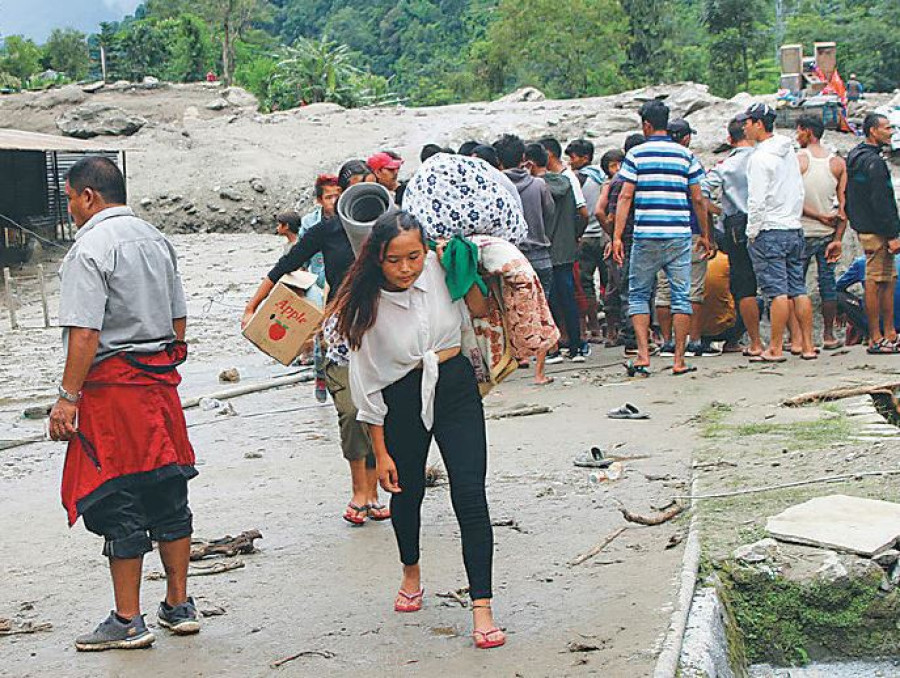
Anish Tiwari & Timothy Aryal
Mangale Tamang lost all of his four family members in the massive landslide that struck Jure in Sindhupalchok on August 2, 2014. The landslide killed 156 people and left hundreds injured and displaced. It had blocked the Sunkoshi river for weeks forming a lake at Jure for several days and destroyed a kilometre of the Arniko Highway to the Chinese border. The lake, three kilometres long and 47metres deep, submerged 26 houses.
Before the landslide, Tamang, a farmer, led a quiet existence at Itani in Balefi Rural Municipality. But the landslide not only wiped out his family but also rendered his fields, buried in debris, useless.
Tamang, 54, has been living at Magnesite, a mineral processing site, in upper Lamosangu at a shelter along with other locals displaced by the Jure landslide since then. He would want to rebuild a house where his old one once stood or be able to move to another location but that costs money, he says.
”Neither the government looked after us, nor did God,” he said. “Both have proved to be nonexistent. Whom do we share our sorrows with?”
Of the 122 households that lost their family members in the Jure landslide, those who could afford migrated to Kathmandu and elsewhere. The less fortunate like Tamang were left behind, and have been, for all these years, taking shelter in Jure bazaar, Lamosaghu or Kalleri.
The Jure landslide was followed by another catastrophe: the twin earthquakes of April 2015. The epicentre of the second one was Sindhupalchok. As many as 3,570 people were killed and 90,242 houses destroyed in the district alone, according to official data. Nearly 8,000 had died across the country.
Multiple landslides in the last three years have displaced around 700 families in the district. Natural disasters have continued perennially—two major ones being the Bhotekoshi flood in 2016 and this year’s floods and landslides. But apart from temporary shelters, the survivors of these natural calamities have not received much from the authorities.
Selu Tamang of Paugumba village in Listikot Ward No 1 of Bhotekoshi Rural Municipality still wakes up to nightmares of her house crashing down on her and killing her mother and sister in 2015. “I would have made peace with it if I had received sufficient help to restart my life and if I didn’t have to live with constant fears of more landslides,” she said. Selu, 34, had rebuilt her home taking loans and with the help of neighbours and relatives but the new house too was swept away by a landslide this year.
In Sindhupalchok, disasters continue and the number of dead, injured and displaced increases every year. This year, seven people have so far been killed by floods and landslides in Jambu, Bulkute, Fulpingkatti, Larcha and Melamchi; twenty-three are still missing. Seven hundred households have been displaced across the district. The Bhotekoshi river flooded, washing away 36 houses.
Chari Bahadur Tamang, a survivor from Jambu who lost his family in a landslide, said that the displaced are currently taking shelter in makeshift tents at Maneshwara and Palati. Some are still in the disaster-stricken village waiting for help. From another landslide in Larcha, 58 displaced families are taking shelter in the Tatopani area.
According to Umesh Kumar Dhakal, chief district officer, the exact account of loss is yet to be ascertained. “We are focusing on minimising further loss and have asked the locals to move to safe places if they are at risk,” he told the Post.

Sindhupalchok is especially vulnerable to natural disasters, for both the natural and man-made reasons, geologists say.
Among the numerous reasons contributing to landslides, Dhruba Gautam, a geologist and disaster researcher, pointed out six major ones, including the prevalence of thrusts beneath the earth’s surface—Main Boundary Thrust (MBT) and Frontal Back Thrust (FBT)—vegetation type, topography, culture and tradition of building homes in the sloped terrains in the hills, the earthquakes and the frequency of heavy rainfall.
“The earthquakes of 2015 have led the landmass to develop several fault lines, where the rainwaters seep through, making the soil loose and porous, causing landslides,” Gautam said. “But besides that, the focus of our local units to penetrate rural villages with road networks and their unsustainable approach to constructing these infrastructures without conducting proper technical research has contributed to the district being more prone to natural disasters in the last decade. A lack of proper drainage system is another reason for soil erosion in hilly terrains leading to frequent landslips and landslides.”
Most of the infrastructures are developed without geological and topographical studies, Gautam pointed out, which on one hand lead to frequent occurrences of landslides, while the silt from the construction gets accumulated in the riverbed, raising the water’s surface and increasing chances of floods.
“Much of the problem with human interventions on the landscapes stems from a lack of science-based decision-making process,” said Basanta Raj Adhikari, assistant professor of Engineering Geology at Pulchowk Engineering Campus. “Most of the landslides that have occurred during the monsoons are not deep-seated, and completely avoidable if a proper system is engineered to channel the surface water to the nearest gorge.”
Anil Pokhrel, chief executive at National Disaster Risk Reduction and Management Authority, said that his office has informed the local units about areas vulnerable to landslides and disasters, but it’s up to the local units to either go by the instructions or dismiss them. The Authority coordinates with local units to devise ways to reduce risks of the disasters as per the Disaster Risk Reduction Act.
While the local units in Sindhupalchok have put in efforts at resettling the displaced, risk reduction is yet to gain a spot in their priority list, said Rajendra Sharma, a local activist. The efforts at resettling have not been very successful either. A total of 25 integrated model settlements have been built to accommodate the displaced by different natural disasters but the rising number of victims will soon override the capacity of the settlements, he said.
”The rebuilding process after the quakes is still not complete, while the number of the victims of disasters keeps adding up,” he said. ”Natural calamities have set back the district, hindering its economic and social progress.”
Many victims of the earthquakes were building their homes taking loans before the pandemic hit the country back in March. But the landslides and floods have halted their efforts.
Of the 90,242 families displaced since the earthquake, 76,215 have already built their houses, according to the data furnished by the District Project Coordination Unit in Sindhupalchok.
Another 5,000 houses were being built with help from social organisations, according to District Project Coordination Unit’s chief Santosh Niraula. ”The rebuilding process was approaching its final stages before the lockdown, but the pandemic brought that to a grinding halt,” he said.
Elected people’s representatives in the district have said that they are currently formulating long-term goals to rehabilitate the victims of floods and landslides.
However, financial constraints have put some local units’ disaster response on the backburner. Chari Bahadur Tamang, ward 8 chairman in Balefi Rural Municipality, said that his office is struggling to respond to the crises due to a lack of funds.
“Over Rs 20 million was provided by donors for Jure landslide victims but the amount is currently with the Central Natural Disaster Rescue Committee,” Chari Bahadur said. “The fund meant for the displaced is with the committee while the victims are awaiting support.”
Baahrabise and Bhotekoshi rural municipalities recently decided to provide Rs100,000 each to families of the dead and missing in the recent landslides. “We are planning for sustainable rehabilitation of the victims but currently, we are focussed on the immediate problems like providing relief and shelter to the victims,” Sushila Pakhrin, deputy mayor of Baahrabise, said.
But for Selu Tamang, who survived both the quakes and landslides while losing all of her family, the future looks grim. For her, things today are not much different than what it was in the aftermath of the disasters. “This year’s landslide took the house I had managed to build after I lost the first one to the earthquake in 2015. Now I’m back to living in temporary shelters,” she said. “I have nowhere else to go.”




 8.12°C Kathmandu
8.12°C Kathmandu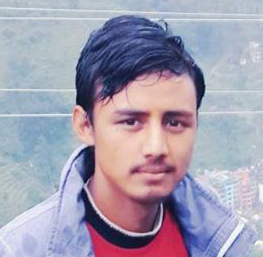

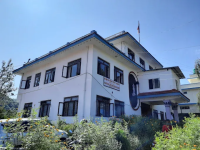





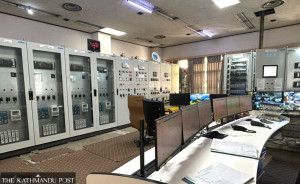
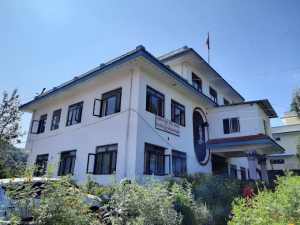
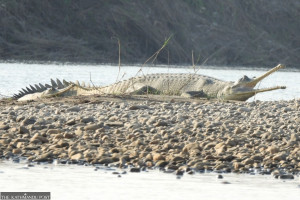


%20(1).jpg&w=300&height=200)

